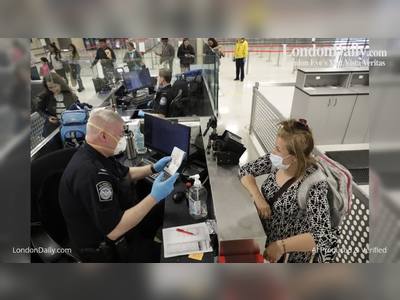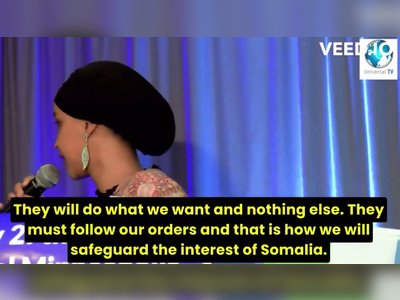
Doctors are turning to YouTube to learn how to do surgical procedures, but there’s no quality control
When Dr. Justin Barad was a medical resident, he would often encounter a problem he’d never managed or be asked to use a device without much training.
So he’d turn to YouTube.
Barad, who completed his surgical training at UCLA in 2015, said YouTube has become a fixture of medical education. He’d often get prepped by watching a video before a procedure. Sometimes he’d even open a YouTube video in the operating theater when confronted with a particularly challenging surgery or unexpected complication.“I don’t know a surgeon who hasn’t had a similar experience,” said Barad, who has now started a surgical training company called Osso VR.
CNBC found tens of thousands of videos showing a wide variety of medical procedures on the Google-owned video platform, some of them hovering around a million views. People have livestreamed giving birth and broadcast their face-lifts. One video, which shows the removal of a dense, white cataract, has gone somewhat viral and now has more than 1.7 million views. Others seem to have found crossover appeal with nonmedical viewers, such as a video from the U.K.-based group Audiology Associates showing a weirdly satisfying removal of a giant glob of earwax.
Doctors are uploading these videos to market themselves or to help others in the field, and the amount is growing by leaps and bounds. Researchers in January found more than 20,000 videos related to prostate surgery alone, compared with just 500 videos in 2009.
The videos are a particular boon for doctors in training. When the University of Iowa surveyed its surgeons, including its fourth-year medical students and residents, it found that YouTube was the most-used video source for surgical preparation by far.
But residents and medical students are not the only ones tuning in. Experienced doctors, like Stanford Hospital’s vascular surgeon Dr. Oliver Aalami said he turned to YouTube recently ahead of a particularly difficult exposure.
“It was helpful, but I kept thinking that some of these videos should be verified,” he said, “A bit like Twitter and its blue badges.”
The quality conundrum
There’s one problem with this practice that will be familiar to anybody who’s searched YouTube for tips on more mundane tasks like household repairs. How can doctors tell which videos are valid and which contain bogus information?
For instance, one recent study found more than 68,000 videos associated with a common procedure known as a distal radius fracture immobilization. The researchers evaluated the content for their technical skill demonstrated and educational skill, and created a score. Only 16 of the videos even met basic criteria, including whether they were performed by a health-care professional or institution. Among those, the scores were mixed. In several cases, the credentials of the person performing the procedure could not be identified at all.
Even more concerning, studies are finding that the YouTube algorithm is highly ranking videos where the technique isn’t optimal. A group of researchers found that for a surgical technique called a laparoscopic cholecystectomy, about half the videos showed unsafe maneuvers.
Medical experts say this content hasn’t been particularly well curated, in part because it’s an expensive process. Massive-scale internet platforms like YouTube limit expenses by stressing that they are a platform with some basic rules, and they don’t vet or add editorial notes to content. YouTube doesn’t claim to be accredited for medical education, and therefore can surface content based on popularity and not on quality.
YouTube did not return a request for comment about its surgical content. Google Health declined to comment.
One solution would be paying a group of doctors to do the work of vetting surgical videos, suggests Dr. Joshua Landy, a Canadian physician who developed an Instagram-like service for doctors called Figure 1. “You’d need to be experienced to distinguish between the surgeries done properly and the technique is the most up-to-date and safe,” he said.
For patients watching the surgeries to get a sense for what happens once they go under, that kind of heavy-handed curation might not be necessary. But it’s a pressing need for inexperienced physicians, who rely on the videos to fill gaps in their medical education before they perform the procedures.
“Seeing cases is what makes you better at medicine because there’s always unusual things you’ll have to navigate,” said Landy. “So many doctors will watch these videos over and over again for thousands of hours.”
Google seems to be aware of the problem. But so far, the company has only made some small steps to provide some rules around graphic medical videos. Those uploading the videos must share descriptive titles, so users know what they’re in for, and the purpose must be to educate rather than to offend or surprise a viewer. One thing that’s not allowed, for instance, is footage from a procedure featuring open wounds where there’s no clear explanation to viewers.
But the company might deviate from its hands-off policy to do more in the coming months. Google’s vice president of health, David Feinberg, noted at a recent medical conference in the fall that a lot of surgeons are flocking to YouTube. He implied, without sharing specifics, that his team would look to do a better job of managing the content as part of its broader focus on combating health misinformation across Google.
Medical experts say they’re more than willing to work with YouTube to help curate medical content.
Many academic medical centers, notes Jefferson Health’s chief executive Dr. Stephen Klasko, are still using the same, age-old methods to train doctors and have not evolved for the digital age.
“We recognize that technology will transform health care, but what member of any medical school faculty understands things like coding or social media at the level of their students?” he said.
Klasko sees potential for YouTube in medical training. Moreover, he notes, surgeons are increasingly being asked to use sophisticated hardware that requires a lot of additional training. One particularly popular type of content on YouTube is an instruction manual for Intuitive’s da Vinci surgical robots, which can take months of practice to master. (This one, on how to suture a grape with a da Vinci, is particularly special.)
“These surgical robotics companies will go out of the way to credential people quickly,” said Klasko. “But it’s a tough skill to pick up.”
In the interim, some doctors, like Jefferson Health’s chief medical social media officer, Dr. Austin Chiang, who works for Klasko, recommend that their peers check whether a video is associated with a well-regarded hospital or medical society before they watch it or recommend it to others.
In the long run, he said, YouTube should promote this content over others. “One thing Google could do tomorrow is partner with these official societies,” he said.











